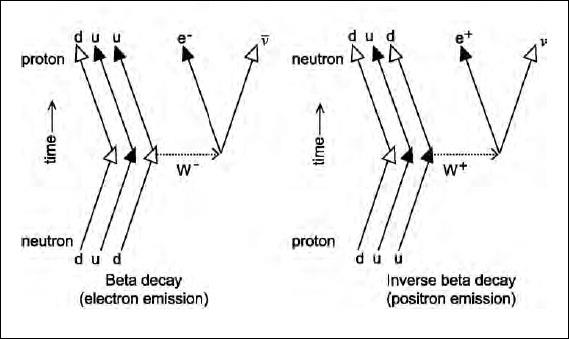Unanswered QuestionsBeyond the Proton, Neutron, and Electron |
Beta decay involves neutrons, protons, electrons, and neutrinos. How is it explained using quarks? |
Beta decay involves two steps. First the down quark changes to an up quark with the emission of a W- boson. Then, almost instantaneously the W- changes into an electron and anti-neutrino. Physicists diagram the two beta decay processes this way:
When a nucleus undergoes beta decay the number of neutrons goes down by one, the number of protons goes up by one, and an electron and anti-neutrino are emitted. In terms of quarks and leptons one of the down quarks in the neutron is changed to an up quark in the proton, and a lepton (electron) and anti-lepton (anti-neutrino) are emitted. The change from down to up quark is a flavor change and that can occur only in beta decay. When a positron is emitted in inverse beta decay, an up quark in the proton is changed to a down quark in the neutrino and a lepton (neutrino) and anti-lepton (positron) are emitted.

